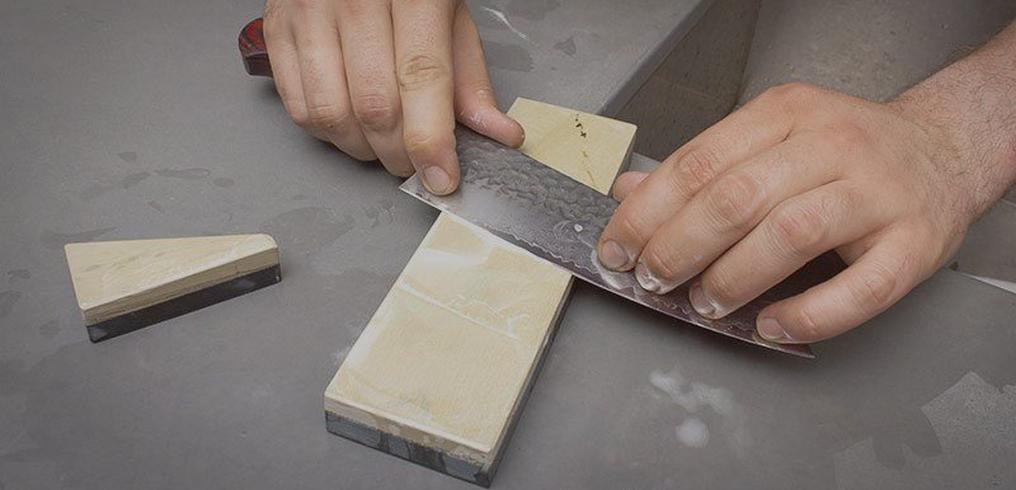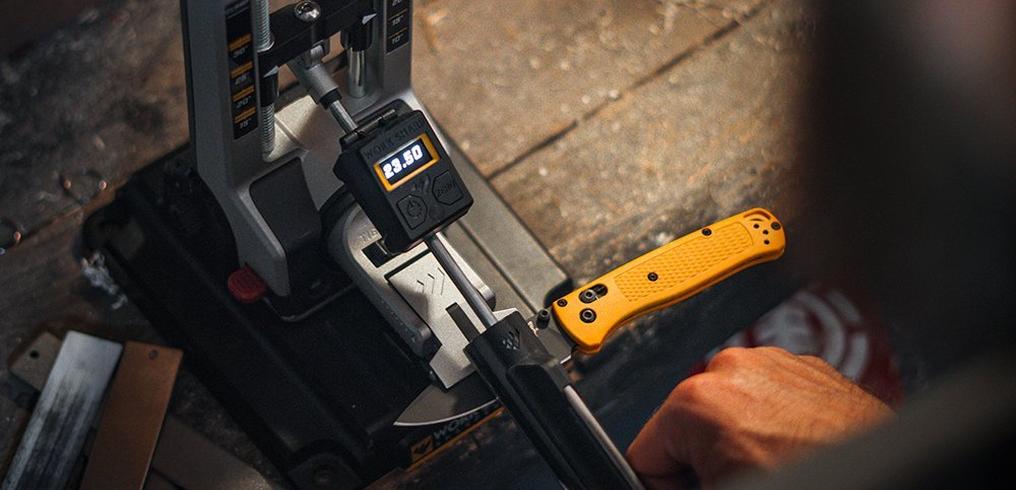How do you use a sharpening steel?
A sharpening steel is an elongated ceramic or diamond-coated rod. A sharpening steel, compared to a honing steel, removes quite a lot of material. It can sharpen a relatively blunt knife without you having to spend hours sharpening it. In most cases using a sharpening steel once a week is more than enough. This, of course, depends on how often you use your knives.
The function of a sharpening steel
So even though the sharpening results differ, the way you use a sharpening steel is the same as using a honing steel. You hold the knife at the right angle on the sharpening steel. You make sure the sharpening steel is either flat or straight up with the tip resting on the counter or cutting board. You start at the heel of the edge and move the knife alongside the sharpening steel until you have reached the tip. Make sure the entire edge hits the sharpening steel. That is why we recommend purchasing a sharpening steel that is just as long as the knife you wish to sharpen.
In the video below you can learn more about the differences between a sharpening steel and honing steel and how to use them.
Sharpening angle and use
The sharpening angle you use for Japanese knives is often approx. 15 degrees and 20 degrees for European knives. You determine the angle by first placing the knife perpendicular to the sharpening steel. This is a 90-degree angle. Take half and half again and you are left with 22.5 degrees. The last part is a bit of a guess, but this is how you know you got the right angle. At first it will be difficult to maintain this angle, but practice makes perfect. You could start by practising with an old or cheap kitchen knife before sharpening your favourite kitchen knives. It is almost impossible to destroy your knife. Even when sharpening at the wrong angle you can always sharpen the knife again at the right angle.
Instead of 'securing' the sharpening steel on the cutting board you can also sharpen freehand. You hold the sharpening steel horizontally and 'cut' away from you, again from the heel towards the tip. There are professional chefs with years of experience who use this method because it is faster. The tip-on-cutting-board-method, however, offers you more stability and makes it easier to maintain the right angle. Find out for yourself which method will suit you best!
Choosing a sharpening steel: diamond or ceramics
There are, as mentioned before, two types of sharpening steels: with ceramic or diamond sharpening particles. Diamond-coated sharpening steels are enhanced with a metal core that contains small synthetic diamonds. These diamond particles are not only coarse, they are also rock-solid. As such you can quickly sharpen your knives, even those made from the hardest types of steels. The disadvantage is that you remove quite a lot of material and the results are not sharpest. This is not the same for a ceramic sharpening steel. This is also a rock-solid sharpening material, but the particles are a lot smaller. As such the ceramic sharpening steel won't work as fast, but does leave you with sharper results than a diamond-coated sharpening steel. Do, however, be careful! If you drop a ceramic sharpening steel it will break.
Sharpen your bread knife
Finally: we believe there are sharpening methods that are better than using a sharpening steel. 'Better' in the sense that they leave you with sharper results. For small maintenance, however, they are perfect. The advantage of using sharpening steels is also that you can sharpen serrated knives such as bread knives. This is not possible with most sharpening stones or (electric) sharpening systems. Do keep in mind that the diameter of your sharpening steel is similar to the size of the serrations. We love to tell you more about how to sharpen bread knives in our 'how-to': sharpening a bread knife.
Extensive maintenance
Sharpening steels are perfect for small maintenance and postponing extensive maintenance. Are you dealing with very blunt knives? Time to bring out the big guns! For extensive maintenance we recommend sharpening stones and sharpening systems.

Sharpening steel or honing steel: the difference
The sharpening steel and the honing steel: optically speaking they are very similar and often confused with each other. What is the difference between the two?











